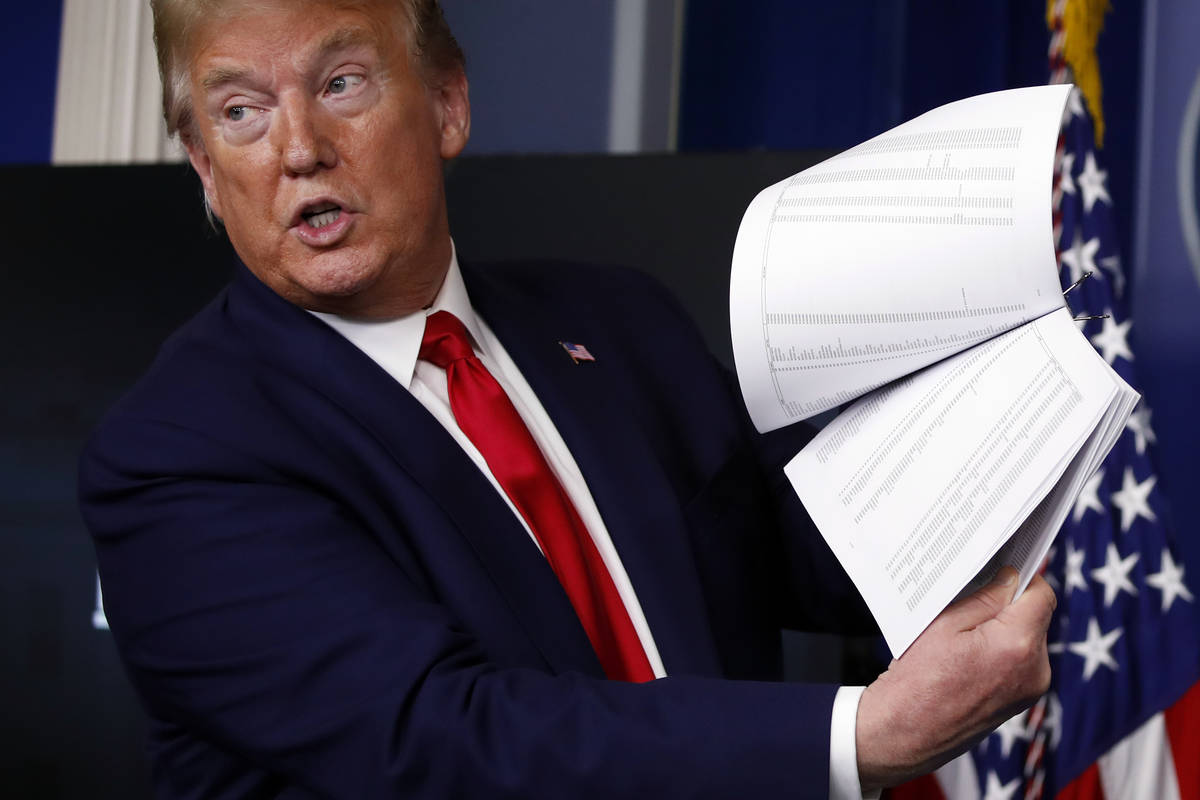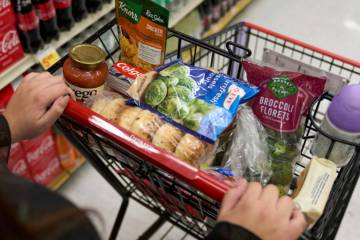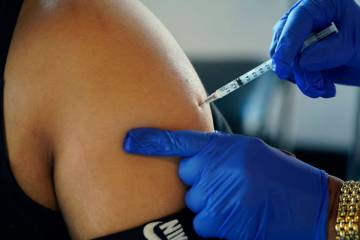Trump administration details coronavirus aid to Nevada
WASHINGTON — The White House on Tuesday released a comprehensive coronavirus aid list for Nevada, detailing medical equipment and financial assistances designed to help the state weather the crisis.
The list included $43.7 million from the Federal Emergency Management Agency and another $300 million from the Department of Health and Human Services for health care centers and health care providers.
On the medical front, the list included 48,400 N95 masks, 417,000 surgical and procedural masks, 350,700 surgical gowns and 106,700 surgical and exam gloves sent to Nevada.
In addition, the public-private Project Air Bridge delivered 150 ventilators and other medical equipment to the Silver State.
The White House also said it had issued more than $2.99 billion in Small Business Administration loans to more than 23,000 Nevada businesses, as well as Economic Impact Payments to Nevadans.
One area with no big numbers, however, involved diagnostic tests. In lieu of test numbers, the Trump administration offered an assurance that federal regulators are easing the way for more robust tests: “HHS, the Centers for Disease Control and Prevention (CDC), and the Food and Drug Administration (FDA) are providing unprecedented regulatory flexibilities, resources, and guidance to expand the availability of testing and to assist States, including Nevada, in scaling testing.”
Earlier in the month, Gov. Steve Sisolak’s office told the Las Vegas Review-Journal that the Silver State had received components needed to conduct tests — including 3,000 reagent kits and 4,000 swabs — which Carson City considered “not nearly the volume needed to perform the desire amount of testing.”
In recent weeks, New York Gov. Andrew Cuomo, a Democrat, has been sparring with President Donald Trump over whether the federal government or states should be responsible for obtaining and administering diagnostic tests.
But on Monday, Cuomo recognized, “the president is right, the states’ testing is up to the states to do.”
At the same time, Cuomo maintained that the federal government needed to smooth the supply chain so that states can obtain reagents, swabs and other materials.
After a White House meeting Tuesday with Cuomo, Trump said the federal government would work with states by engaging manufacturers and distributors. “We hope that this model will work with the other states as well,” he said.
One Nevada official said the state needs more.
“We’re still not where we want to be. Plain and simple, we need to do more testing,” said Dr. Brian Labus, an assistant professor in epidemiology and biostatistics at UNLV and one of of Sisolak’s medical advisers.
“There’s no way that any individual entity can handle this whole thing,” Labus added. “I don’t think you can put the responsibility on the states or the feds. It’s best if both parties do their part in this response.”
According to Politifact, the United States is testing an average of 150,000 Americans daily — when 500,000 to one million tests per day are needed.
Trump also noted the FDA had authorized more than 50 types of diagnostic tests, as well as four antibody tests that can detect immunity to the virus.
During a phone interview Tuesday, a senior administration official told the Review-Journal that the FDA’s actions to “quickly and safely approve” testing capability helped Nevada.
A bill the Senate passed Tuesday afternoon included an extra $25 billion to increase testing capabilities.
Contact Debra J. Saunders at dsaunders@reviewjournal.com or 202-662-7391. Follow @DebraJSaunders on Twitter.
White House details federal... by Steve Sebelius on Scribd
"Numbers continue to fluctuate, but an average of 150,000 Americans are currently being tested for the virus per day. In a country of 330 million people, this is considered far behind the amount of testing that medical officials say is paramount to safely reopen the country — and for it stay open. Experts say U.S. testing needs to quadruple or more to between 500,000 and 1 million people tested per day."
-Politifact











































